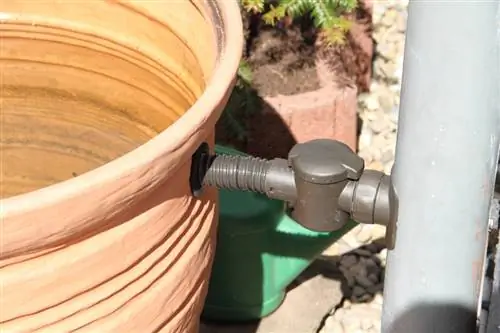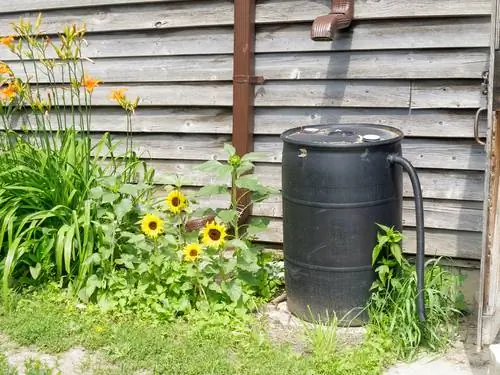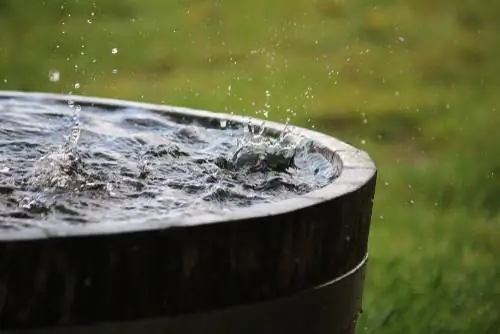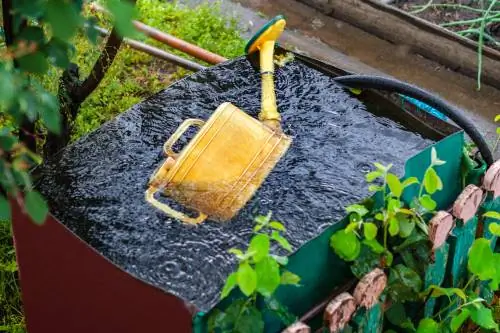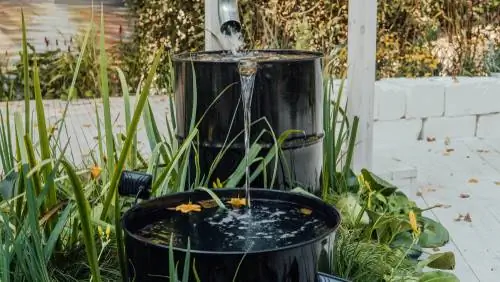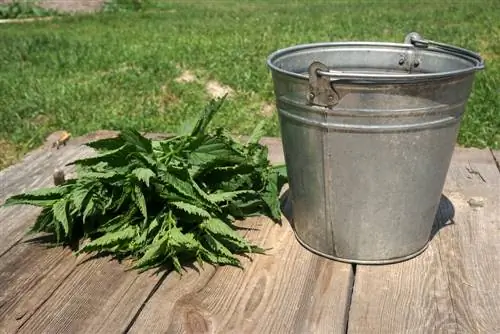- Author admin [email protected].
- Public 2023-12-16 16:46.
- Last modified 2025-01-23 11:21.
Use expensive tap water to water flowers? Why not use collected rainwater as an alternative? Many plants actually tolerate this extremely well. Of course, it requires a little effort to install a necessary overflow for the rain barrel. But once you have accomplished this, you will save an enormous amount of costs. With the instructions on this page you can set it up very easily.
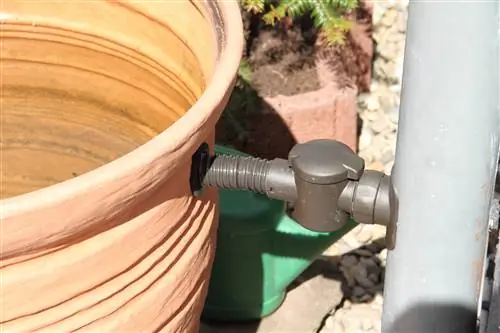
How can I build a rain barrel overflow myself?
To make a rain barrel overflow yourself, you need materials such as a plastic barrel, screw-in adapter, sealing rings, Teflon tape and silicone sealant. Drill a hole 10 cm below the top of the barrel, attach the adapter with a sealing ring and silicone, and connect a garden hose for the overflow.
Construction instructions
Material procurement
You need:
- large plastic barrels (capacity at least 200 liters)
- a 3/4 inch faucet
- a 3/4 inch coupling with matching screw connection
- a 3/4 inch screw-in adapter with hose connection
- a 3/4 inch nut
- four metal sealing rings
- Teflon sealing tape
- Silicone sealant
- an S-shaped downpipe (€226.00 on Amazon) (same material as the one you already have)
- Fly screen made of aluminum
- Concrete blocks
Note: The plastic barrels are available either online or inexpensively from numerous companies upon request. If these are decommissioned specimens, you must ensure that there are no remaining oil or lubricant residues in the containers before use. Rinse thoroughly with soap.
Prepare location
So that there is no water loss. If your rain barrel tips over, you should build a stable platform. Ideally, this should be located directly next to the downpipe on the wall of the house. Detailed instructions can be found at this link.
Install the overflow
- Drill a hole 10 cm below the top of the rain barrel.
- A 3/4 inch connection is recommended here.
- Draw a circle of silicone around both the inner and outer edges.
- Place a sealing ring on the adapter.
- Push the adapter through the hole from the outside.
- Put a sealing washer into the hole from the inside.
- Wrap Teflon tape around the thread.
- Screw the nuts onto the thread and tighten them.
- Now it is possible to connect a garden hose to the adapter from outside.
Complete construction
In addition to overflow protection, a functional rain barrel also includes a drain tap and a lid. You may also want to connect two rain barrels together to store even more water. We have also put together instructions for you for these procedures.

